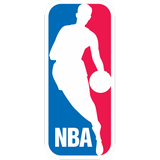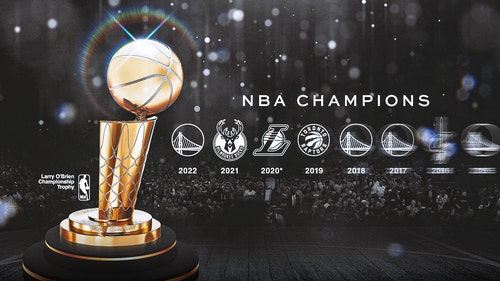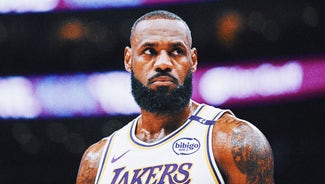
Goran Dragic can be an All-Star this season

Without Dwyane Wade to share the Miami Heat backcourt, will Goran Dragic make his first All-Star team?
Miami Heat point guard Goran Dragic enters the 2016-17 with a great challenge, and even greater responsibility. For the first time in three seasons Dragic will have the full reins to the offense. Now entering his ninth NBA season, Dragic will relish the freedom he was seeking after demanding a trade from the Phoenix Suns.
With Wade now plying his trade in Chicago, Dragic gets the chance to prove he is worth the $85 million investment the Heat made in him. And with the playing future of Chris Bosh in doubt, Dragic has an incredible opportunity. Whilst losing such huge names as Wade and possibly Bosh can seem highly deflating, the Miami Heat have an array of up-and-away exciting young talent to lead them forward.
With possibly two all-stars out, that is exactly what Dragic should be aiming for: All-Star status.
Recently, whilst visiting Dragic in his native Slovenia, Heat head coach Erik Spoelstra spoke glowingly of Dragic.
“You don’t find many players that can attack, that can play fast, that can make other players better in that type of game. And he’s relentless….It only makes sense to maximizes Goran’s strengths.”
Team President Pat Riley echoed Spoelstra’s sentiments.
“I think Goran is going to have a different kind of season, a different kind of responsibility.”
Since the departure of LeBron James, the Heat were again in the hands of Wade. Whilst they did increase the pace of play on occasion, it didn’t last long. Dragic had to take a back-seat (which is a credit to him as a teammate).
But it is now evident that the Heat hierarchy have made it clear the Heat will get out and run, which is what Dragic does best. In order to reach an all-star level, there are a number of factors that need to be taken into account.
Mandatory Credit: Mark J. Rebilas-USA TODAY Sports
Comparing Miami and Phoenix
A simple yet effective way of forecasting how Dragic may fare this season is the usage rate–a measure of the percentage of team plays used by a player while he is on the floor.
The 2013-14 season represented Dragic’s last full season in Phoenix. It was a genuine breakout season, resulting in Dragic making the All-NBA Third Team and receiving the NBA’s Most Improved Player award.
That year with the Suns, Dragic had a usage rate of 24.5 percent. In Miami last season, his rate was 21.9 percent.
Dragic’s scoring average for 2013-14 in Phoenix was 20.3 points per game, compared to 14.1 points per game for the Heat last season. This represents a significant drop.
Partnering the backcourt with a high volume ball-handler in Wade is a significant reason for the lower usage and production of Dragic. As Spoelstra said, Dragic wants to play fast and attack. It’s quite difficult to do this without the ball in your hands and standing in the corner.
Like the Heat this season, the forecast for the Suns in 2013-14 was not rosy. However, with Dragic as the driver of the team, they ended up with 48 wins, narrowly missing the playoffs in a brutal Western Conference. Dragic excelled even further during the 38 games the team was missing fellow ball-handler Eric Bledsoe. His usage rate rose to 26.5 in those games, accompanied by 22.1 points per game.
Many comparisons can be made between this coming season and Dragic’s breakout in Phoenix. Minus a fellow dominating ball-handler, Dragic should excel, and his numbers should return to something similar to what he posted in his breakout season.
Games without Wade
Last season, Dragic played six games in which Wade was absent. His averages in those games: 16.8 points, 6.5 assists in 33.8 minutes per game while shooting 40 percent and posting a 26.3 usage rate.
Most noticeable in this short sample is the usage rate increase. His points, assists and minutes per game all represented an increase on his season averages.
The field goal percentage, however was a significant drop. This should not be a concern, considering Dragic has a career field goal percentage of 47 percent. He’s been one of the most efficient guards in the game throughout his career.
From a personal perspective, the first Miami Heat game I ever attended was the New Year’s Day game this past season against the Dallas Mavericks. The Heat started the game without Dwyane Wade due to illness. When Wade entered the game, the Heat led 36-22 with Dragic already having contributed 11 points and four assists.
It was evident in person the difference with and without Wade on the floor. Without him, Dragic was able to play his game – attacking, hitting mid-range jumpers and playing with supreme confidence. He looked like the best player on the floor, without question.
It’s a small sample size, but one that provided insight into how Dragic could excel without the presence of Wade, despite the Mavs playing like they had just come straight from a long night at club LIV.
Full highlights of the game are above, with a few snippets of Dragic’s play that night.
Mandatory Credit: Bob Donnan-USA TODAY Sports
Eastern Conference competition
Here is a list of Dragic’s competition for a spot on the Eastern Conference All-Star team, and there stats from the 2015-16 season.
John Wall: 77 games; 19.9 points per game; 10.2 assists per game; 42.4 field goal percentage; 36.2 minutes per game; 28.6 usage rate (19th in league)
Kyle Lowry: 77 games; 21.2 points per game; 6.4 assists per game; 42.7 field goal percentage; 37 minutes per game; 26.1 usage rate (31st)
Kyrie Irving: 53 games; 19.6 points per game; 4.7 assists per game; 44.8 field goal percentage; 31.5 minutes per game; 29.5 usage rate (15th)
DeMar DeRozan: 78 games; 23.5 points per game; 4.0 assists per game; 44.6 field goal percentage; 35.9 minutes per game; 29.8 usage rate (11th)
Dwyane Wade: 74 games; 19 points per game; 4.6 assists per game; 45.6 field goal percentage; 30.5 minutes per game; 31.6 usage rate (Fifth)
Isaiah Thomas: 82 games; 22.2 points per game; 6.2 assists per game; 42.8 field goal percentage; 32.2 minutes per game; 29.6 usage rate (14th)
Goran Dragic: 72 games; 14.1 points per game; 5.8 assists per game; 47.7 field goal percentage; 32.8 minutes per game; 21.9 usage rate (73rd)
Aside from the most common statistical discrepancies (points, assists per game), the usage rate of his rivals also stands out. Dragic was significantly behind his fellow Eastern Conference point guards in these areas last season.
However, if Dragic can return to his breakout season form, his numbers will rise to those of the other elite guards in the East.
All-Star game prospects
So, can Goran Dragic become an all-star this season?
My answer is a resounding yes.
Despite producing his lowest numbers since 2012-13 last season, Dragic has demonstrated that he is the real deal. Whether the starting shooting guard for the Heat is Josh Richardson, Dion Waiters or Wayne Ellington, it won’t matter. This is now Dragic’s team. His usage rate will most likely reach a career high, and the confidence this will bring will most definitely show in his performance.
At age 30, Dragic is still in the prime of his career. He has a relatively low amount of miles on his legs for a starting point guard, since he didn’t play all that much in his first few season. By the way, Steve Nash–someone Dragic models his game after–didn’t win his first MVP until age 31.
Further validating his all-star potential this season: one of the three point guards whom played with Dragic in his final season in Phoenix was Isaiah Thomas, now of the Boston Celtics. Thomas was the backup with the Suns until Dragic departed due to the logjam. Roll the clock forward and given the right environment, Thomas last year made his all-star debut.
There is absolutely no reason that Dragic can’t repeat Thomas’ efforts. It’s his time to take charge and put the team on his back. It’s something he is more than capable of doing.
And it should ensure an exciting upcoming season for Miami Heat fans.
More from All U Can Heat
This article originally appeared on









